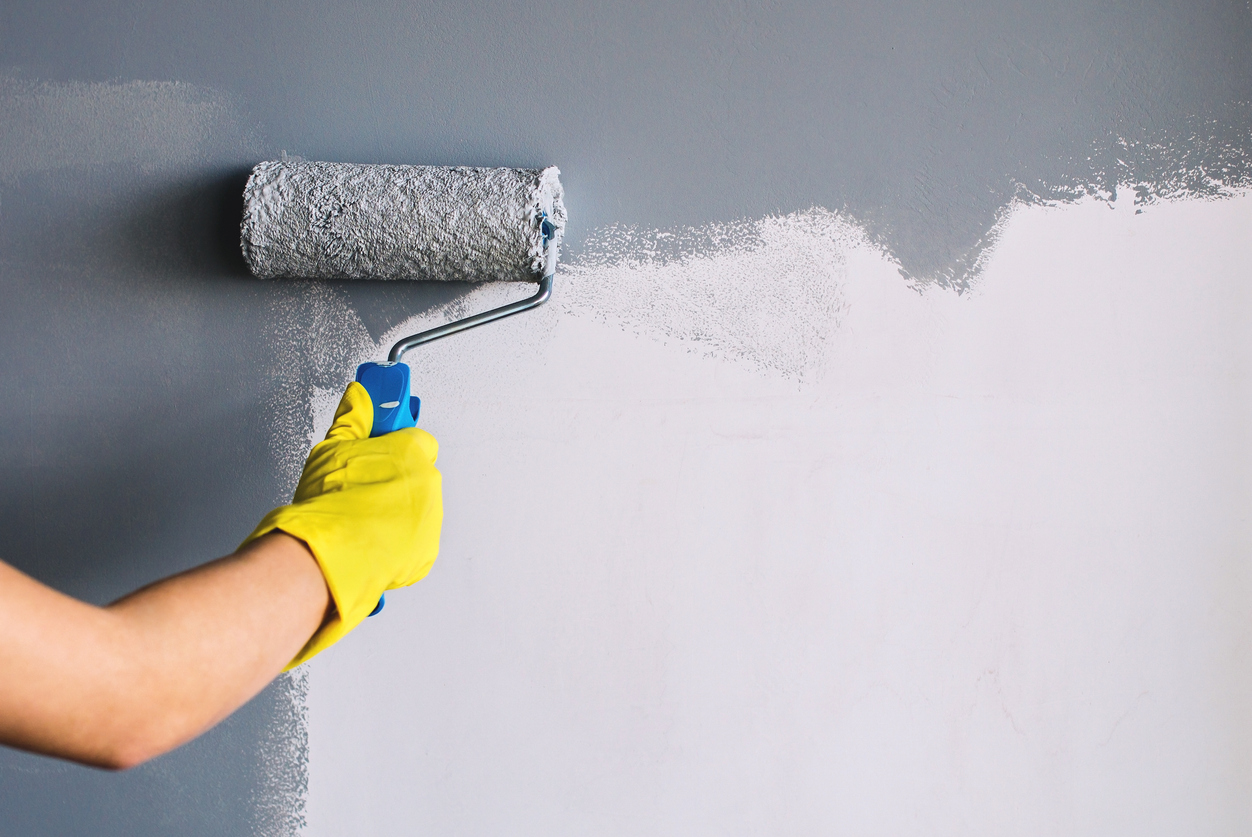When people start a project doing house painting in San Ramon, they may want to know which type of paint is right for their home’s exterior. Should you choose latex (water-based) or oil-based (alkyd) paint? Homeowners, especially those who haven’t had the experience of painting their own house, may not be able to tell the difference. Professional painters can help you decide whether you are doing traditional exterior painting to faux painting.
To know what kind of paint your house currently has, simply take a rag, moisten it with denatured alcohol, and rub the paint. If it gets clean, it is oil-based. If it softens, it is latex. Now, let’s first understand the difference.
Oil-Based Paint
Oil-based paint, known for its robust and durable finish, has been popular for many years for Pleasanton, CA area homes. It comprises a base of oil or alkyd, which acts as the carrier for the pigment and binder. This type of paint is praised for its rich color quality and high resistance to wear, making it an excellent option for surfaces that endure a lot of handling or exposure to elements.
Pros:
Durable: Oil-based paints are exceptionally durable. They form a hard, protective coating that withstands significant wear and tear. This makes them ideal for areas that receive frequent use or handling, such as door frames, cabinets, and baseboards.
Smooth and glossy finish: The finish quality of oil-based paint is known for its smoothness and gloss, making your painted surface appealing. This type of paint can achieve superior depth of color, making it a preferred choice for projects where a luxurious, high-shine finish is desired.
Weather-resistant: Oil-based paint is great for exterior painting because it resists different weather conditions. It can repel water and resist temperature changes, making it suitable for exterior walls, doors, and trim.
Compatible with different surfaces: This type of paint is can be used on metal surfaces, as it helps prevent rust and corrosion. Because it can adhere to metal, it’s a great choice for coating metal railings, gates, and outdoor furniture.
Cons:
Environmental impact: Oil-based paints release higher levels of volatile organic compounds (VOCs) into the atmosphere during drying. These emissions can have adverse effects on air quality and pose health risks to people sensitive to chemical exposures.
Health risks: The VOCs emitted by oil-based paints can lead to health issues such as respiratory problems, headaches, and dizziness for those exposed during painting and drying phases. The strong odors of these paints can also be quite overpowering and uncomfortable, especially in enclosed spaces.
Longer drying time: Compared to latex paints, oil-based paints have a longer drying time, extending the duration of painting projects and requiring more meticulous planning to avoid dust and debris settling on the paint before it cures.
Challenging to maintain: Oil-based paint requires solvents like turpentine or mineral spirits for clean-up, which can complicate maintenance. Also, surfaces painted with oil-based products often need more frequent touch-ups and protective treatments to maintain their aesthetic appeal over time.
Latex Paint
On the other hand, latex paint, which is water-based, offers a more environmentally friendly option. It contains pigments and binders suspended in water. Latex paints are popular due to their ease of use and quick drying times.
Pros:
Easy to use and clean up: Latex paint is user-friendly. It’s water-based, which means that brushes, rollers, and spills can be cleaned up easily with soap and water. This convenience makes it a favorite among DIY enthusiasts and professional painters alike.
Environment-friendly: Due to its water-based formulation, latex paint contains lower levels of VOCs compared to oil-based paints. This type of paint offers better indoor air quality and reduces overall environmental impact.
Quick drying times: It dries much faster than oil-based paint, which does not only speed up painting projects but also reduces the risk of dust and dirt sticking to the paint surface.
Cons:
Flexible: While latex paint is highly flexible – which is beneficial for preventing cracks and peeling – this flexibility can sometimes be a disadvantage. In projects where you need highly durable and hard paint, especially on surfaces that endure heavy wear, latex paint might underperform compared to oil-based options.
May not always stick well: Latex paint may not always adhere well to high-gloss surfaces or surfaces that have been previously painted with oil-based paints without proper surface preparation.
Not great at preventing rust: It can also be less effective in blocking stains or preventing rust in metal applications, which could need additional priming and preparation steps to achieve optimal results.
Contractor Insights on Choosing the Right Paint
When it comes to selecting the right type of paint for a house painting project, professional contractors consider several key factors to ensure the best outcome:
- Weather Conditions: Contractors evaluate the local climate and weather patterns because some paints perform better in specific conditions. For example, oil-based paints are preferred in areas with high moisture levels due to their water-repelling properties, while latex paints are chosen for their quick drying times in regions with brief dry weather windows.
- Surface Material: Oil-based paints adhere better to non-porous surfaces such as metal and provide durable finishes, making them suitable for trim and doors. Latex paint is often recommended for porous surfaces like drywall due to its flexibility and ease of application.
- Homeowner Preferences: Your aesthetic choice and willingness to maintain also influence the choice. Some homeowners prefer the glossy finish of oil-based paints for their classic look, while others might prioritize the environmental benefits and ease of use offered by latex paints.
Tips from Experts
- For Durability: Experts often suggest oil-based paints for surfaces that require a tougher, more durable finish. Preparing the surface properly and applying a suitable primer can enhance the longevity and performance of the finish.
- For Aesthetic Appeal: Choosing the right sheen is crucial. Higher gloss levels are not only more durable but also easier to clean, making them ideal for areas like kitchens and bathrooms. Matte finishes – usually achieved by latex paints – are better for hiding surface imperfections.
Conclusion
When tackling a painting project, it helps to understand the difference between oil-based and latex paints to make an informed choice. If your priority is to make a durable coat with superior finish quality, oil-based paints are the better choice. However, if you are concerned about the environmental impact and if you want a paint that’s easy to use, latex is your friend. Oil-based paints are better for exteriors and high-touch areas, while latex paints are ideal for interior walls or ceilings.
For personalized, expert advice tailored to your specific needs and preferences, consider consulting with Custom Painting Inc. You can message us through our online form or contact us at 925-866-9610. We can guide you through the selection process to ensure your home looks beautiful and receives the best protection.


